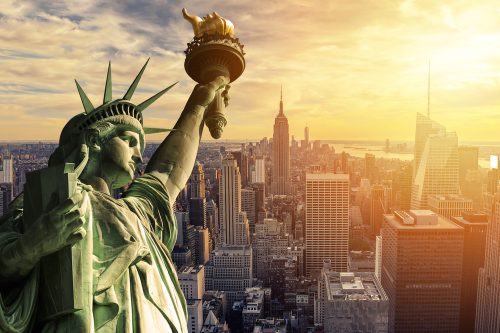This blog originally appeared on WalkerViewPoints on 9/30/20
Many kids, like me, first-generation college students, with farm and factory parents realized the American Dream.
Ours was postwar America, a time of relative prosperity, when a poor kid could afford a decent college, when good jobs were abundant, and when wages were good.’
Introducing the Great Society in 1964 at the University of Michigan, Lyndon Johnson said, “The Great Society rests on abundance and liberty for all. It demands an end to poverty and racial injustice, to which we are totally committed in our time.”
What went wrong with the Great Society, the American Dream? First, many were left behind: I was among the later to wake up to that. I didn’t protest the many injustices to our minorities which persisted throughout the Great Society years.
I didn’t even notice how democracy was becoming synonymous with capitalism. I was busy realizing my American Dream, the dream for a poor kid from the tobacco fields of North Carolina. I didn’t try to understand who was left behind or why, as I made my own journey.
So, I was late to see that most of us Boomers who made it were white males. I was late to realize how very different it was for those without my attributes. For a black woman finishing high school in my year, the future would have been very different, and very, very difficult. That’s what Martin Luther King was talking about, a different “Dream,” for all, one that has yet to be realized.
During the sixties and seventies, we had inequality and poverty. But CEO salaries were only about 20 times that of the average worker. The middle class and lower class had a decent share of national wealth. But in the eighties, there was a major shift in policy and economics emanating from the Reagan era, which affected everyone in the next generation, except the wealthy:
How did the Great Society evolve to a nation in which the top 1% of Americans now own 40% of the nation’s wealth, and where the income gap shows the same pattern as the wealth gap? The launching of neoliberal economic policy changed everything. CEO salaries skyrocketed, reaching 278 times that of their employees’ average, and neither Democratic nor Republican administrations have done much to change that. The American Dream was being destroyed.
I have asked myself, what have I done? I have contributed thousands of hours of time and seven-figure amounts of money to causes which benefit people with a variety of needs they cannot afford to meet. But is that enough? The answer is easy: No! It’s not enough. I feel like Oskar Schindler at the end of Schindler’s List: “I could have done more, so much more!”
But is philanthropy the answer to poverty and inequality? Hurrah for those who have money and seek out the most needed causes to support, those of the poor. But a study by Google in 2005 found that only 8% of all philanthropy went to the basic needs of the poor and another 23% to programs such as medical, empowerment, and education—about 1/3 of philanthropy in total to those in need. 69% went elsewhere.
Total US philanthropy in 2019 was $450 billion. If 1/3 went to those in need, that is $150 billion, to be divided among 38 million Americans in poverty, or $3,947.37 per person in poverty. Philanthropy is not the answer. We cannot funnel more and more wealth to the already rich, in hopes that they will rescue our poor.
There is a concept in sociology, an explanation of the nature of society. The “conflict perspective” holds that the inevitable and continuing nature of society is a contest between the haves and the have-nots. Poverty and inequality are inevitable, because
those in power, the capitalists, need low wages to maximize their profits and their wealth. This is the way it is. This is the way it will always be. The capitalists always win.
We will always have some poverty and inequality, but we can achieve moderation. How about CEO salaries back to maybe 50 times the average worker? How about the upper-income bracket rolling back to 60% of all wealth? How about 32% again for the middle-income group and at least 7% for the lower-income group?
We have to change our legal system, change our tax system, and change capitalism. These institutions are not serving the common good. This is the only answer. What’s wrong with this set of objectives? It’s not socialism! And, it’s a better, sustainable, United States–for the wealthy and the poor.
